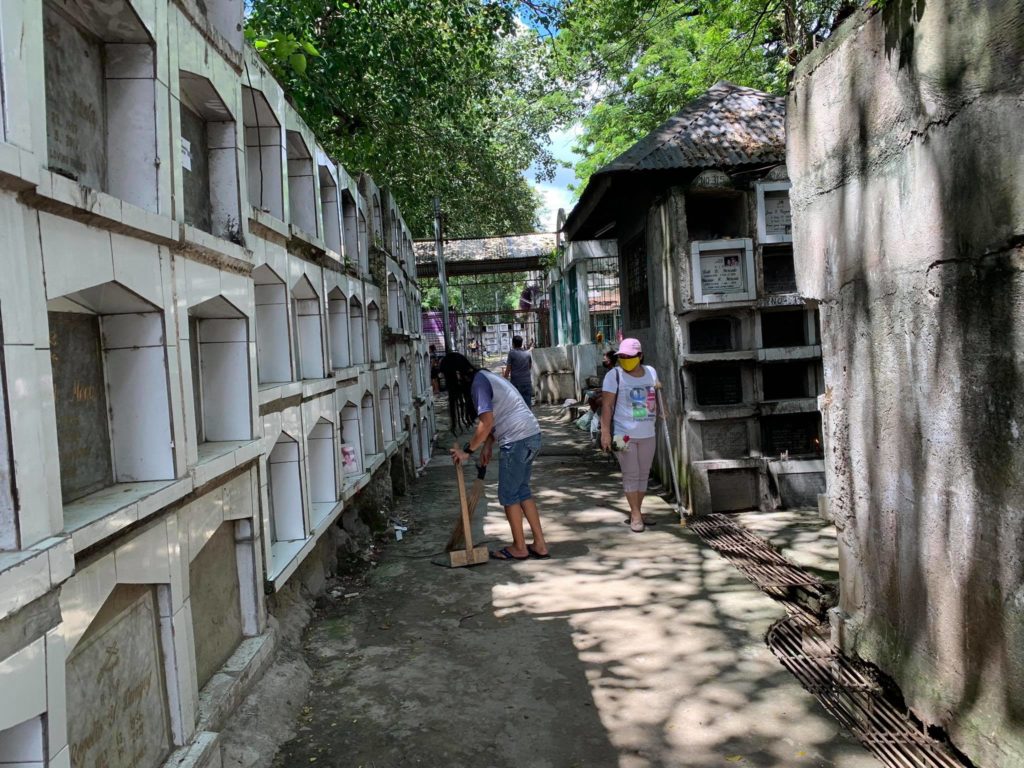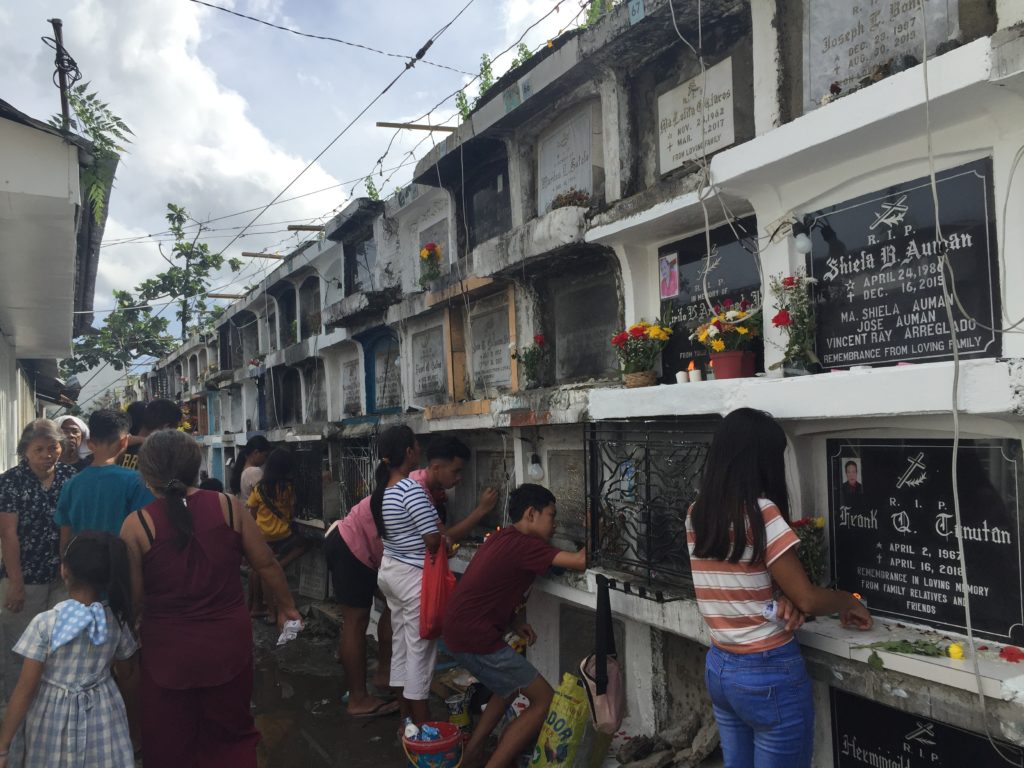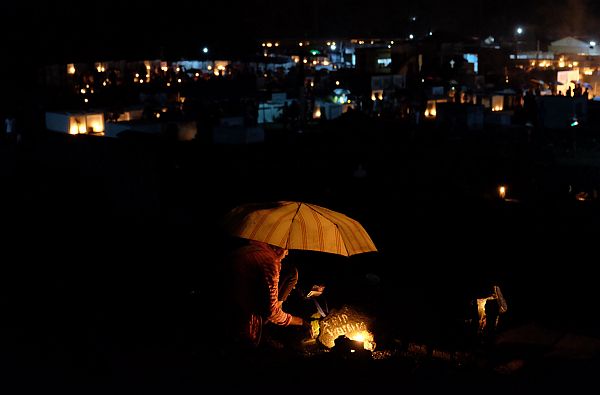Why All Saints’ Day and All Souls’ Day are celebrated
(Part 1 of 2 part series)
CEBU CITY, Philippines — Different colored flowers, dripping candle wax on cement tombstones, and thousands of people shoulder-to-shoulder in the otherwise empty graveyards.
This used to be the scenery of a traditional All Saints’ Day and All Souls’ Day every November 1 and 2 in the Philippines.
Yet when the deadly COVID-19 pandemic hit the country, it cut off not only the living from each other through physical and social distancing but also the living from the dead due to the closure of the cemeteries.
COVID-19 took at least 41,000 Filipino lives, yet on the days when the living and the dead should meet in a celebration of family, the graveyards are empty.
The Inter-Agency Task Force (IATF) has once again ordered the closure of the cemeteries from October 29 to November 2, 2021, to avoid overcrowding.
This is the second year that cemeteries are closed on the two days it should have been opened.
Only a few local government units (LGUs) have challenged the mandate and has requested exemptions including Cebu City and Lapu-Lapu City, but the task force has yet to respond.
It will be another cold year for the graves.

A few individuals are seen inside the Carreta Sto. Rosario Cemetery on Monday morning, October 18, 2021. | Pegeen Maisie Sararaña
Why celebrate Kalag-kalag?
The Catholic Church canonically celebrates All Saints’ Day and All Souls’ Day separately.
According to Monsignor Joseph Tan, the spokesperson of the Archdiocese of Cebu, the All Saints Day on November 1, is a day dedicated to the saints who have not been named here on Earth yet who are believed to have entered into heaven.
“So November 1, atong gipasidunggan ang tanan nga tungod sa ilang maayo nga pagtubang sa tawag sa Ginoo sa kinabuhi, pagsanong sa tawag sa pagka balaan, pagpuyog og kinabuhing mahigugmaon og mapagmatuohon, bisan wala sila nahinganli diri sa yuta kay wala sila girecognize nga santos sa simbahan,” said Tan.
(On November 1, we recognize all of those who rightfully answered the call of God in life, that in heeding the call to sainthood, they lived a loving and truthful life. Even if they were not named here on Earth because they were not recognized as saints by the church.)
The All Saints’ Day is an all-encompassing event for the unknown saints who have the capability to pray for the souls still on Earth and in Purgatory.
Tan said that in the Catholic context, the celebration was an appeal for the intercession of the saints in heaven for guidance to one day enter the Kingdom of Heaven.
The All Souls’ Day, on the other hand, is the day when Catholics pray for the souls still seeking to enter heaven and may be stuck in Purgatory.
In Catholic teachings, the term Church means three groups: the Church Triumphant in Heaven, the Church Militant on Earth, and the Church Suffering in Purgatory.
“There is the ‘in-between’ of the Church Triumphant in heaven and the Church Militant on earth, ang church suffering. Kini ang mga tawo nga, sa Simbahang Katoliko nga pagtulunan, uniquely Catholic teaching. Sila ang nibiya niining kalibotana nga wala makapahingpit sa ilang -pag-andam sa ilang pagatubang sa Ginoo. Gitagaan silang lain nga chance nga mahibalik sa ginoo. Naa sila sa purgatoryo, aron mailaha ang healing of their souls and purgation of their sins,” said Tan.
There is the ‘in-between’ of the Church Triumphant in Heaven and the Church Militant on Earth, the church suffering. These are the people who in the teachings of the Catholic Church, is a uniquely Catholic teaching. They are the ones who left this earth who are not really ready in their answer to the call of God. They are given a chance to return to God. They are in purgatory so that they can have the healing of their souls and purgation of their sins.)
“Dili naman sila makahimo, makaresponde sa Ginoo. Ang nahabilin tua sa langit og kitang naa sa yuta nga naa pay kakayahan, are called to do what we can to appeal to the mercy of God through our prayers nga luwason sila gikan sa ilang mga sala,” said Tan.
(They cannot respond to God. And what are left are those in heaven and us here on earth, who have the capability and are called to do what we can to appeal to the mercy of God through our prayers that they will be saved from their sins.)
In the Catholic Context, the two celebrations are a celebration of prayer for the souls of the department whether they may be in heaven or in purgatory.

Visitors start to arrive in St. Joseph’s Parish Roman Catholic Cemetery in Mandaue City at 8 a.m. on November 1, 2019. | CDN Digital file photo
A cultural touch
Yet Filipinos have turned this uniquely Catholic tradition into a cultural phenomenon yearly.
Tan said that the practice of putting flowers, candles, and sometimes even food are not exactly religious in nature but aids in the remembering and the grieving for the deceased loved ones.
There are more social traditions formed around the two religious days including family reunions, fiesta-like celebrations, and the paying of respects to ancestral graves.
There are also non-religious and highly folkloric traditions that emerge from the Kalag-kalag season such as the palina tradition of leaving cemeteries.
The tradition of passing through smoked embers to ensure that any form of negativity is removed before leaving the cemetery has no religious context but is an ancient belief of evil spirits abounding the graves.
“Cultural na siya, nga dili maduhigan mao na paasuhan. Kana siya typical nga Filipino practice. Wala man na siya gitudlo sa atong simbahan. It’s more a cultural practice,” he said.
(That is a cultural thing that no negative things will cling to us that is why they smoke them out. That is the typical Filipino practice. That is not a teaching of the church. It’s more a cultural practice.)
Tan said that it is natural that religion and culture mix during the celebrations because the two days had become synonymous to a family gatherings.

An elderly woman lights a candle at the tomb of her departed loved ones during the All Saints’ Day and All Souls’ Day at a Catholic cemetery in Guinobatan, Albay in this November 1, 2017 photo. | Inquirer file photo
Unforgotten
Despite the closure of the cemeteries this year, the Catholic Church believes that the essence of the celebration is not reduced by the incapability to visit the graveyards.
Tan said that this was one of the challenges of the Catholic Church because people who had lost many of their loved ones in the pandemic had this deep longing to celebrate the season.
Yet because of the restrictions, many families will once again not be able to visit the cemeteries.
“Ang labing importante sa mga mahal nato sa kinabuhi nga nipahulay na mao ang pag-apil nila sa atong mga pag-ampo whether personal prayers, other forms of devotion, rosaryo, novena, or ato silang iapil og halad sa santos nga misa, kini ang mas mahuluganon para sa kaluwasan sa kalag suma sa tinulunan nato sa simbahang Katoliko.”
(The most important for our departed loved ones is that they will be included in our prayers whether personal prayers, other forms of devotion, rosary, novena or they will be included in celebrating the Holy Mass, which is the most meaningful for the salvation of their souls according to the teachings of the Catholic Church.)
“Kanang uban, kanang pagdalag buwak og kandila, mga pakapin na lang na, timailhan sa paghigugma. The charity that we need to exercise sa mga patay kay ang pag-apil nila dinha sa atong pag-ampo,” said Tan.
(The others, the bringing of flowers or candles on their graves, those are just extra things, that are signs of our love to them. The charity that we need to exercise for the dead is to include them in our prayers.)
READ: Archdiocese of Cebu awaits Cebu City’s final decision on Nov. 1 and 2
Tan said that the Church had remained connected by the grace of God and even if families could not visit the graves of their dead loved ones.
The most important tradition that people should never forget for the Kalag-kalag season is praying for the dead, the one true act of love that is the true essence of the celebration. (To be continued.)
RELATED STORY
Cemeteries shut anew for 2nd ‘Undas’ in a row
/dbs
Disclaimer: The comments uploaded on this site do not necessarily represent or reflect the views of management and owner of Cebudailynews. We reserve the right to exclude comments that we deem to be inconsistent with our editorial standards.

